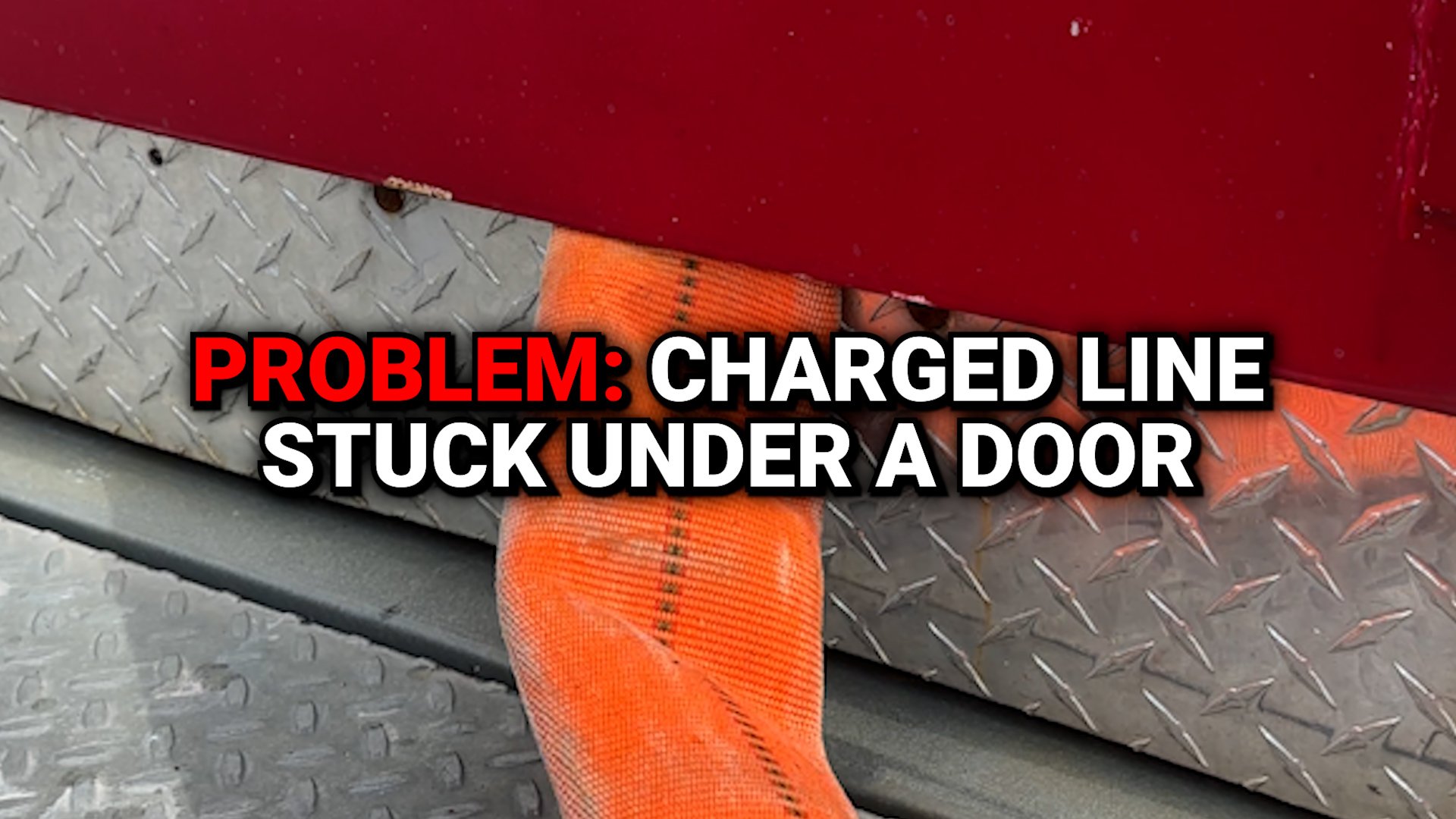Summary: In high-rise firefighting, unexpected kinks and obstructions in the hoseline can cause dangerous water loss. This video demonstrates a critical scenario where a charged hoseline got pinched under a door, cutting off water supply to the fire floor. The solution: bleed the line, prop the door, and resume flow. Having the right high-rise kit — especially with integrated valves, bleeding capability and swiveling components — can prevent costly delays and keep your water moving under pressure.
What Happens When a Charged Line Gets Pinched Under a Door?
In high-rise firefighting, water supply issues can be deadly — especially when your crew is inside pushing a line and suddenly loses pressure. That’s exactly what this training video walks through: a charged hoseline that gets caught under a door, leading to total water loss on the fire floor.
The Problem: Water Loss from a Kinked or Pinched Line
Throughout the scenario, firefighters on the fire floor repeatedly radio back: "Check for a kink" or "Check the supply, I lost all water". The root cause? The line was stuck under a door — a simple but disastrous snag that blocked flow just when it was needed most.
The Solution: Bleed the Line, Prop the Door, Go!
The video’s graphic overlay gives a fast breakdown of the fix:
-
Bleed the Line – Relieve any pressure built up behind the obstruction.
-
Prop the Door – Create space so the line can move freely without getting pinched again.
-
Go! – Resume the attack with water flowing smoothly.
This quick sequence prevents repeated pressure loss and restores flow to the nozzle team.
Why the Right High-Rise Kit Matters
A stuck line might seem like a small problem, but in high-rise ops, little issues escalate fast. That’s why having the right high-rise kit can make all the difference.
All-in-One Standpipe Valve for Faster Setup
TFT’s High Rise Kit comes with a one-piece standpipe valve that integrates the elbow, gate, and pressure gauge — saving time and limiting connections under pressure. Traditional kits often require three or four separate fittings. Fewer connections mean fewer potential pinch points.
360° Swivel Design for Line Flexibility
The TFT valve swivels 360 degrees, allowing the hoseline to angle cleanly away from the standpipe. This helps avoid wall pinch points or door jams before you even charge the line. The pressure gauge also swivels for better visibility, even in tight stairwells.
Built-In Redundancy with Reducers and Increasers
The kit also includes a 2.5” to 1.5” reducer and a 1.5” to 2.5” increaser — so no matter what connection you face at the riser, you’re ready. Add spanner wrenches and a compact duffel bag, and you're equipped to handle most standpipe configurations fast.
Final Word: Watch Your Line and Gear Up Right
Whether you're first in or operating two floors above, a pinched line can kill momentum and risk lives. Keep your eyes on the hose path, especially around doors and stairs. And make sure your high-rise kit isn’t just complete — it’s designed to make the job faster, cleaner, and more reliable.



Comments